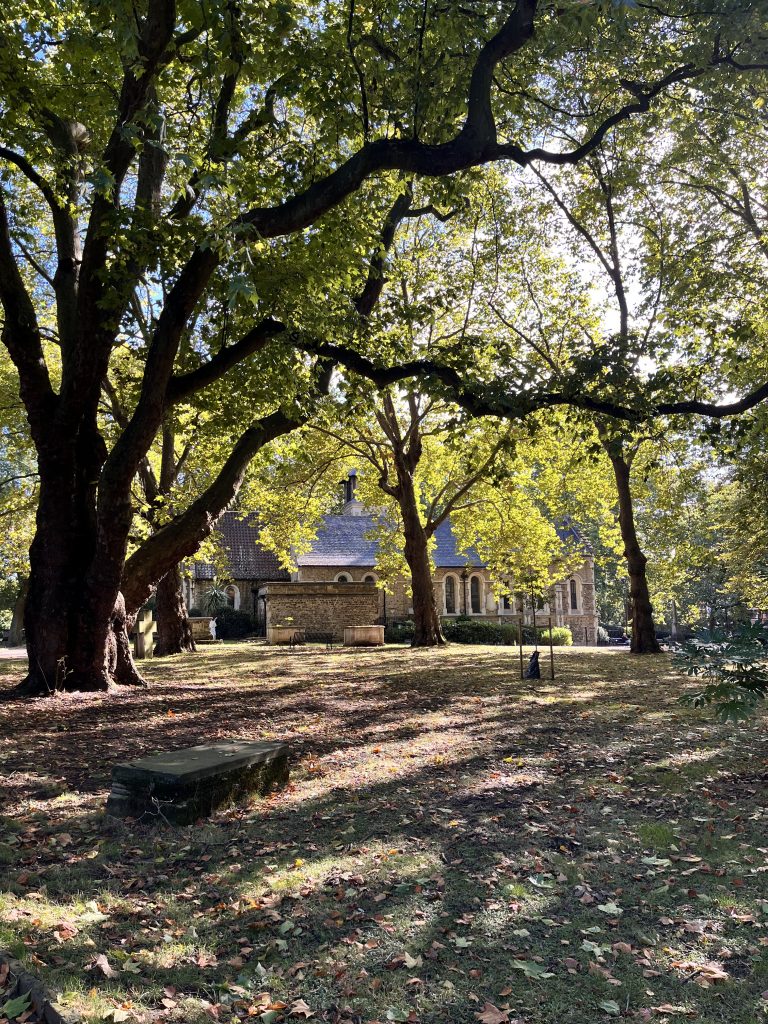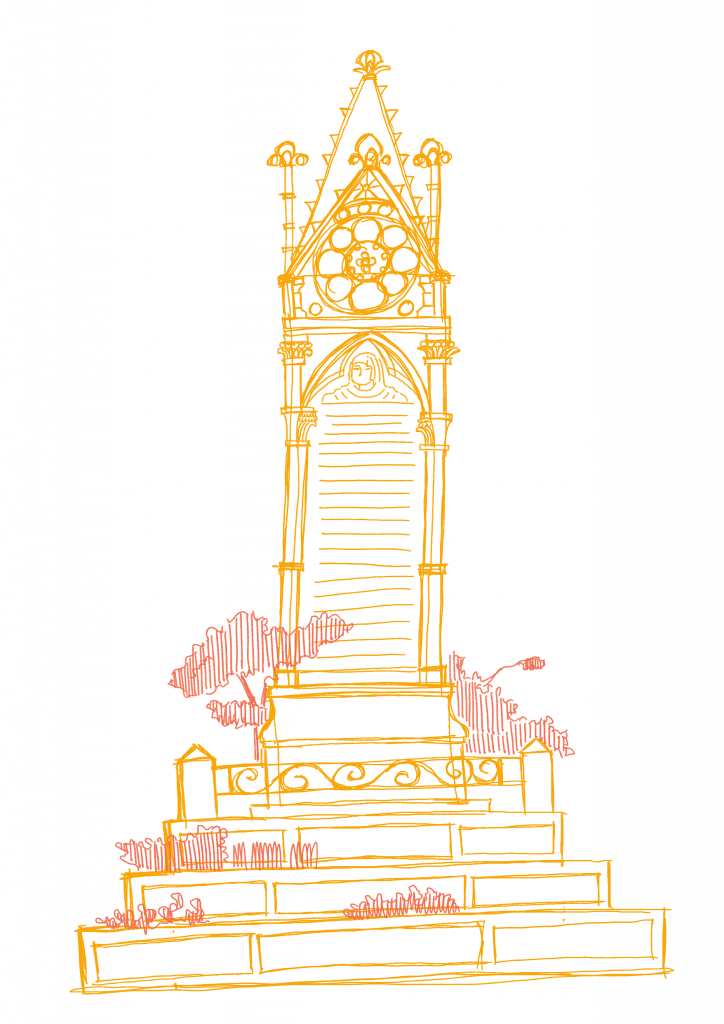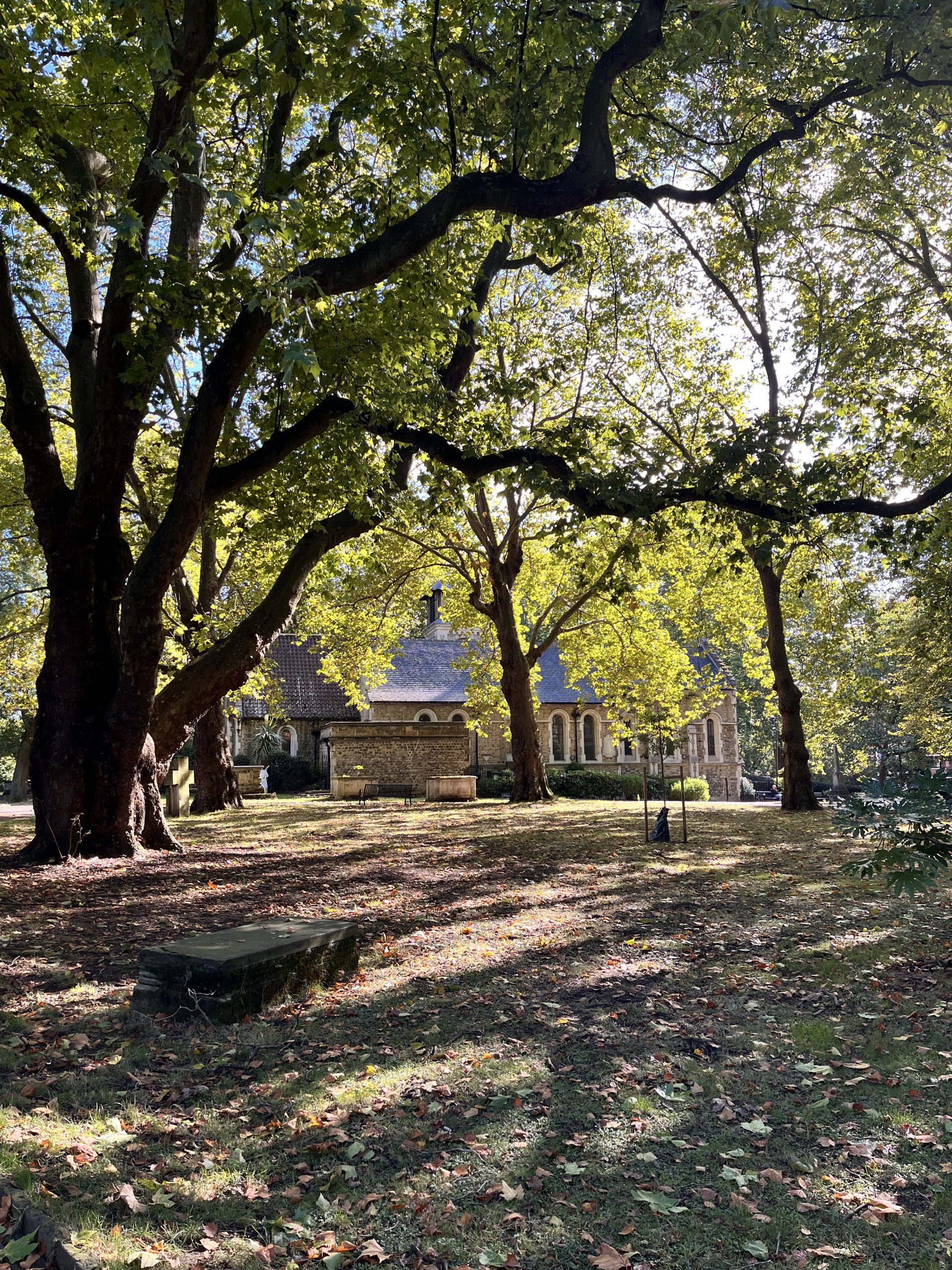
I stumbled upon this garden while looking for a place to sit and eat with my friend. Upon seeing greenery on the map, we set off to find this place, St. Pancras Garden, thinking we could have a picnic there. On arrival, we were stunned to see the tombs littered around the area.
We do not have a relationship with death as casual as this. Back home in Indonesia, we don’t usually walk into church grounds and find gravestones here and there. More importantly, we don’t walk our dogs and read around said gravestones, like the people here in London do. I looked at one of the headstone’s carvings, it said that the person had been deceased since the 1800s. Back home we don’t even have graves that old, save for some monuments.
Safe to say, that this garden piqued my interest. It was natural for me to choose it for my site.
I chose to focus on the monument right in the center of the garden; The Burdett-Coutts Sundial. It has a beautiful gothic style of architecture, which I find very lovely. I sketched out the structure, trying to understand it more as I am forced to see things in greater detail and slower pace when I sketch.

Upon sketching, I realized that parts of the monument were made with iron; something not really accustomed to Gothic architecture. Further reading told me that this monument is actually revival Gothic, a style that was used in the 1800s to romanticize and reminisce about the Gothic era.
I sketch out some of the Mozaic panels as well, lovely depictions of flowers that are made with colored tiles. As I was sketching, it soon became obvious that the panels depicted different seasons and how the flowers that bloom change within each season.

At this point in my research, I have noticed the symbolism of time and memories on the monument. It is made in a style that is used to remember something of the past, it depicts the passing of time in seasons, and even the sundial is carved with the words TEMPUS EDAX RERUM which means “time devours all things.”
But, what is time devouring here?
Sure, seasons change, hours change, and the monument stands tall against it all. But what for? That calls for some more desktop research!
During my further reading about the history of this monument, I learned that Countess Burdett-Coutts commissioned this pricey monument dedicated to those whose graves were disturbed by the building of the railway. It is worth mentioning now that this garden is situated right beside the same railway that connects to King’s Cross station and St. Pancras station. Turns out, when the railway was laid out, it cut through a portion of the graveyard, prompting them to move the affected graves into the now St. Pancras Garden. This move by the government was considered controversial back in the day.
One might argue that Countess Burdett-Coutts commissioned this monument to serve as a replacement of some sort. So the people whose graves were disturbed can still have somewhere their family and friends can visit in their memories. Sadly, there is very limited information about these people on the monument, reducing them to mere names on a monument people only walk past to walk their dogs, 200 years later.
I set out to bring their memories back to life, to at least give their stories a chance to be heard and for them to be thought about in the modern days. Some names stood out to me from the list of names in the monument, but upon further research, four names (and therefore, four stories) were chosen for this project of mine.
First, is Sir John Soane. This name stood out to me not on the monument, but during my visit to The British Museum. His name keeps popping out as one of the donors who donated artifacts to the museum. His vast collection of artifacts must made a good story, so I decided to put him on the roster.
The next one is John Flaxman. This name showed up in my research of the monument as a sculptor the countess was fond of. Seeing that he was a sculptor made me interested in him, so into the roster he goes.
Third is John Walker. He made a rhyming dictionary, and I never heard of it before. The dictionary was sorted in reverse, not by the first letter but by the last syllables. This is very interesting to me, as I did not initially understand the urgency of making such a dictionary.
Lastly, Chevalier d’Eon. I must admit, I got interested because their name is the only French name on the monument. However, upon further research, I found out that they lived their early life presenting in a masculine fashion, serving as a spy, swordsman, and diplomat, but later on started to present themselves more femininely in dresses. They went so far as to get the king to recognize them as a woman, too. This piece of queer history is important to tell, so I decided that I will tell their story too.
The next question is obvious: what will I do with these four stories? Well, I think it’s wise to systematically go down my process in a separate post. So, I’ll see you in the next one!

One response to “on tombs and death”
Hi, this is a comment.
To get started with moderating, editing, and deleting comments, please visit the Comments screen in the dashboard.
Commenter avatars come from Gravatar.